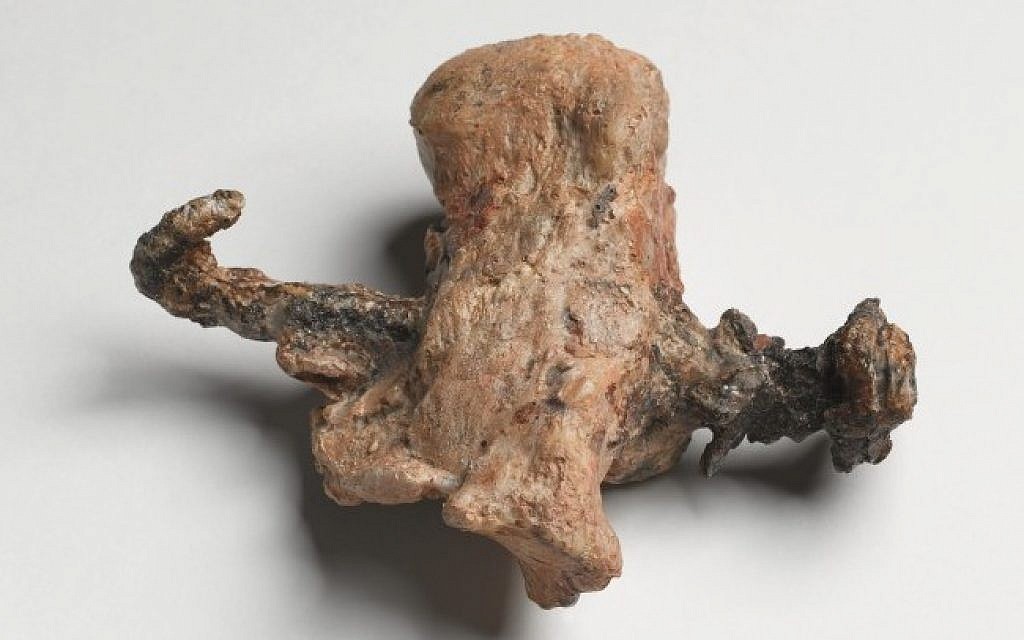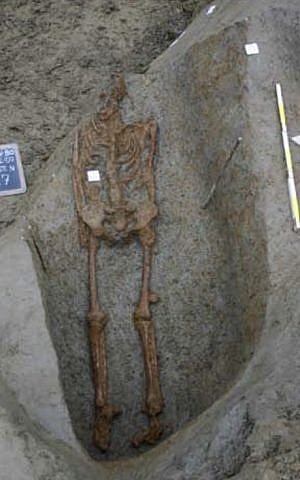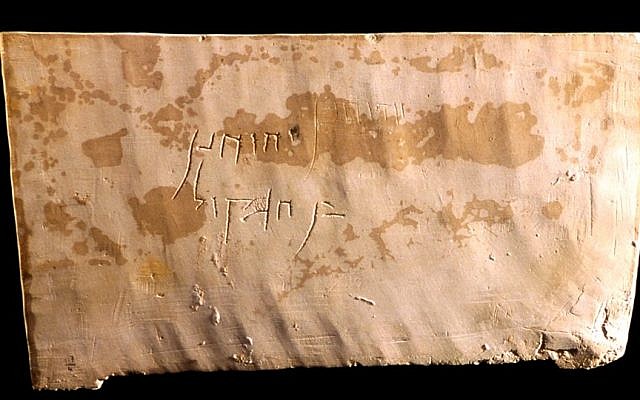Although attested to in scores of historical writings, this skeleton is only the second example providing tangible archaeological proof of the cruel method of capital punishment.
A lesion on the foot of a 2,000-year-old skeleton discovered in a Roman burial site in northern Italy appears to constitute rare tangible evidence of execution by crucifixion, according to an interdisciplinary team of Italian researchers.
Although broadly attested to in historical writings — including the New Testament — it is only the second known archaeological proof of the particularly cruel form of capital punishment practiced by the Romans against criminals, as well as revolutionaries such as Jesus.
The findings — published in the April 2018 edition of the peer-reviewed journal Archaeological and Anthropological Sciences under the title “A multidisciplinary study of calcaneal trauma in Roman Italy: a possible case of crucifixion?” — are based on new analysis of a skeleton that was discovered in 2007 during a salvage excavation of an isolated tomb.
Get The Times of Israel's Daily Edition by email and never miss our top storiesFREE SIGN UP
“In the specific case, despite the poorly preserved conditions, we could demonstrate the presence of signs on the skeleton that indicate a violence similar to crucifixion,” co-author Emanuela Gualdi from the University of Ferrara told the Italian-language paper Estense.
“The importance of the discovery lies in the fact that it is the second case documented in the world,” co-author Ursula Thun Hohenstein told Estense.
“Although this brutal type of execution has been perfected and practiced for a long time by the Romans, the difficulties in preserving damaged bones and, subsequently, in interpreting traumas, hinder the recognition of crucifixion victims, making this testimony even more precious,” Thun Hohenstein said.
The only previously discovered archaeological evidence comes from a 1968 Jerusalem excavation performed by Vassilios Tzaferis of tombs from a massive Second Temple Jewish cemetery (2nd century BCE to 70 CE) in the Giv’at HaMivtar neighborhood. Inside a typical rock-hewn tomb of the era, Tzaferis discovered, among other items, several bone receptacles. Inside one ossuary lay the bones from two generations of males, one 20-24 year old, and the other a mere 3 or 4.

On the heel bone of the older male was discerned a 18 cm (7-inch) nail, upon which was found some 1-2 cm of olive wood — remnants of the cross from which he was hung, researchers concluded. Upon publication, the world heralded this unique proof of the historicity of crucifixion.
According to a 1985 Biblical Archaeology Review article written by Tzaferis titled, “Crucifixion — The Archaeological Evidence,” the Romans were not the creative force behind this painfully punishing form of death.
“Many people erroneously assume that crucifixion was a Roman invention. In fact, Assyrians, Phoenicians and Persians all practiced crucifixion during the first millennium BCE,” wrote Tzaferis.

These newly analyzed Italian remains of the 30- to 34-year-old crucified male are not as entirely unambiguous, however. Their interpretation is complicated by the poor preservation of the bone surfaces. Radiocarbon dating was not possible, but the remains were dated to the Roman era due to their context: archaeologists discovered fragments of typical Roman bricks and tiles.
According to the authors, the skeleton was uncovered during a 2006-2007 infrastructure operation in northern Italy’s Gavello municipality, found about 60 km from Venice in the Po Valley. The individual was found lying on his back, “with the upper limbs at his side and the lower limbs outstretched.” It was, strangely for the time period, buried directly in the ground and without grave goods.
Upon closer examination of the bones, researchers noted “particular lesions” on the right heel.
“To better understand the trauma, we analyzed this bone in detail to determine the time of occurrence and to give an interpretation,” they write. The interdisciplinary team decided to use anthropological and genetic methods to create a “biological profile of the individual.”
Through studying the bones and archaeological data, including the skeleton’s burial context, the researchers believe they were able to more deeply understand the “social role of the victim and the violence pattern in past populations.”
“The results provide evidence of a possible brutal mode of death,” they write.
On the trail of an execution
Initially, the skeleton was given to the University of Ferrara for anthropological analyses, write the researchers. Later, at the University of Siena, 3D images of the hole in the heel were generated with a sophisticated hi-tech digital microscope. Additionally, at the University of Florence’s Molecular Anthropology laboratory, exclusively dedicated to ancient DNA analysis, three pieces from the vertebrae were chosen for genetic analysis.
Evidence of a potential crucifixion is found only on the right heel. The researchers write that they observed a lesion that passed through the “entire width” of the heel bone, penetrating under a horizontal shelf-like portion in the mid-back section of the heel.
“The perforation (length 24 mm) shows a regular round hole passing from the medial side (diameter 9 mm) to the lateral one (diameter 6.5 mm). The pattern of the cross-sectional lesion is linear in the first part, turning slightly downward in the last part,” they write.
“The presence of an ellipsoidal depressed fracture on the medial side, but not on the lateral, suggests that the injury was inflicted peri-mortem and the blow was inflicted from medial to lateral, causing a breakthrough in the impact area (entry point),” they conclude.
In other words, the heel was potentially nailed to a hard surface prior to the death of the victim.
The authors are the first to admit that on the face of it, the findings are not entirely conclusive. With only one other example of crucifixion for comparison, it is difficult to understand what are normative practices.
“The position, section and direction of the perforation are only partly consistent with the other case of crucifixion described previously. We observed a circular hole in the Gavello calcaneus unlike that from Giv’at HaMivtar in which a nail with a square section was used. Although the latter type of nail was more frequent in Roman times, nails with a circular section were also used, as reported in the literature,” they write.
The researchers hypothesize that “the upper limbs were fixed to the cross by nails through the wrist, as per ancient historical sources.” However, here again, the paucity of proof means the arms could just as easily have been tied to the cross, as is thought to possibly be the case in the Jerusalem example.

Social reject?
Based on archaeological and anthropological data, the researchers also draw potential conclusions about the victim. They note that in the Roman world, crucifixion was historically meted out to marginalized populations: slaves (even after their freedom), revolutionaries, foreigners, criminals and other non-Roman citizens, with the exception of soldiers who deserted.
“The irregular burial context, lack of grave goods, short adult stature and possible evidence of torture (Martin and Harrod 2015) suggest a condition of captivity or slavery for the Gavello individual,” they write.
The lone, sole burial in particular gave the researchers pause.
“Isolation of the burial site, as at Gavello, may have been a consequence of the community’s refusal of the individual in death as in life,” they write.
“This kind of execution,” co-author Thun Hohenstein told Estense, “was generally reserved for slaves. The same topographical marginalization of the burial induces us to think that it was an individual considered dangerous and neglected by the society in which he lived that he was rejected by it even after death.”


